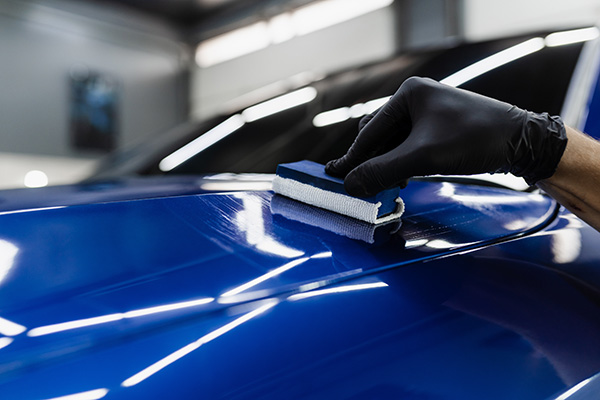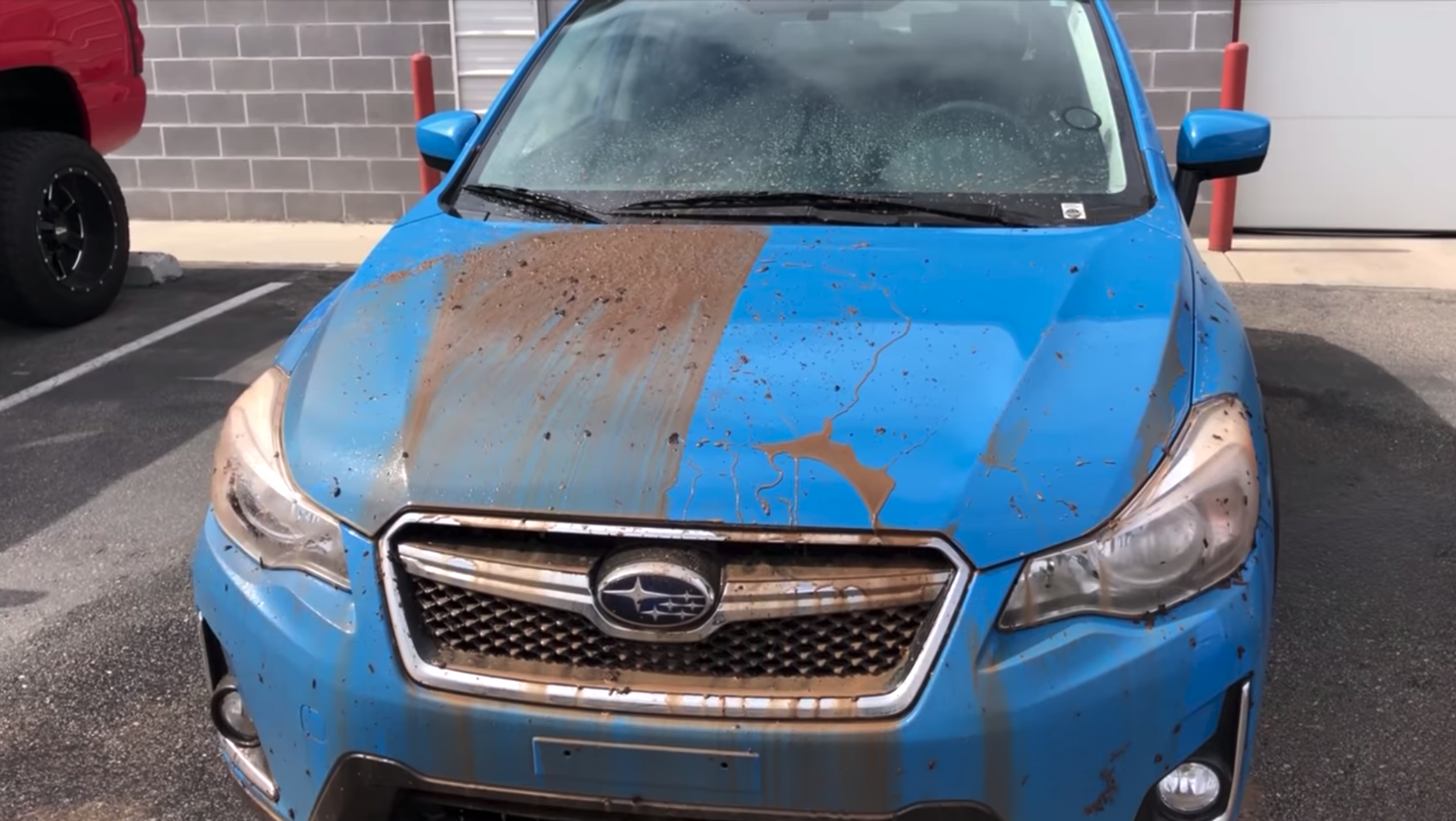Ceramic Coating vs. Traditional Wax: Which is Right for Your Vehicle?
Ceramic Coating vs. Traditional Wax: Which is Right for Your Vehicle?
Blog Article
The Duty of Ceramic Layer in Securing Your Cars and truck's Paint From Environmental Damages
Ceramic layer has arised as an innovative service for cars and truck proprietors seeking to protect the honesty of their vehicle's exterior. As we check out the subtleties of ceramic coating, it ends up being obvious that the selection to implement this protective step might dramatically influence your car's durability and visual.
What Is Ceramic Layer?
Ceramic covering is a sophisticated liquid polymer put on the outside surface areas of a car, created to give a sturdy layer of protection for the paint. This innovative solution forms a chemical bond with the car's factory paint, producing a hydrophobic and resistant shield. The covering includes nanoparticles that fill out the tiny flaws in the paint, leading to a smooth surface that improves gloss and radiate.
Typically, ceramic coverings are available in various solutions, enabling various degrees of security and longevity. While some products can last for numerous months, others use security for a number of years, depending on the thickness of the application and ecological aspects. The application process requires meticulous prep work, including washing, sanitizing, and brightening the lorry's surface area to make sure optimal attachment of the finish.

Advantages of Ceramic Finishing
One of the key advantages of using a ceramic finish is the extraordinary protection it supplies to automobile paint. This advanced layer develops a durable layer that shields the vehicle's surface area from a variety of ecological hazards, consisting of UV rays, acid rain, bird droppings, and tree sap. By giving this robust protection, ceramic coverings significantly minimize the risk of fading and etching, preserving the vehicle's aesthetic appeal over time.
Along with security, ceramic layers are renowned for their hydrophobic properties, which ward off water and dust, making it simpler to preserve a tidy vehicle. This self-cleaning effect lowers the regularity of cleaning, conserving both time and resources. Ceramic layers enhance the deepness of the paint's gloss, resulting in a polished and dynamic look that elevates the general appearance of the lorry.
Another noteworthy benefit is the durability of ceramic layers. Unlike traditional waxes or sealants that require regular reapplication, ceramic layers can last numerous years, offering an economical remedy for car owners seeking long-lasting security. In general, purchasing ceramic finishing causes boosted resilience, minimized maintenance, and sustained visual charm for automobile paint.
Exactly How Ceramic Finishing Works
A ceramic finishing operates with a chemical bonding process that creates a protective layer on the car's paint surface. This innovative solution utilizes innovative nanotechnology, where microscopic bits of silica are suspended in a liquid form - ceramic coating. Upon application, these particles bond with the manufacturing facility paint, forming a hydrophobic and sturdy layer that improves the car's surface
The major element of ceramic finishings, silicon dioxide (SiO2), contributes to the coating's toughness and durability. When cured, the layer changes into a hard, glass-like finish that shields the paint from environmental pollutants such as dust, UV rays, bird droppings, and tree sap. This molecular bond causes a surface that is not just resistant to scrapes however also simpler to cleanse, as dirt and gunk are less likely to adhere.
Additionally, the hydrophobic residential or commercial properties of ceramic coatings trigger water to grain and slide off, minimizing the chances of water places and natural resource. This protective barrier effectively prolongs the life of the paint and preserves the lorry's aesthetic allure, providing automobile owners a resilient remedy for paint security.
Application Process of Ceramic Covering
When taking into consideration the application of ceramic layer, preparation is crucial to attaining optimal results. The primary step entails extensively cleaning the vehicle to remove dirt, crud, and pollutants from the surface area. This usually consists of a purification process utilizing clay bars or chemical cleaners to make sure the paint is flawlessly tidy. Any kind of scrapes or blemishes ought this contact form to be attended to at this phase, as the finish will certainly bond with the surface area below.
Ceramic coating is after that applied in tiny sections, generally utilizing an applicator pad. The car ought to be left to heal in a regulated environment to enable the covering to totally bond with the paint.
Long-Term Maintenance and Treatment
Accomplishing a successful ceramic finish application sets the structure for long-term security, but appropriate maintenance is crucial to preserving its advantages. Regular washing is essential; utilizing a imp source pH-neutral vehicle hair shampoo will assist keep the layer's stability without creating damage. Prevent automated car washes that usage abrasive materials, as they can endanger the covering's surface area.

Additionally, using a ceramic finishing upkeep spray can boost the existing layer, providing an extra boost in security and luster. It's suggested to execute this every three to 6 months, depending on ecological exposure.
Lastly, auto parking in shaded areas or making use of cars and truck covers can stop prolonged direct exposure to hazardous UV rays and ecological impurities, better expanding the life of your ceramic covering. By sticking to these upkeep techniques, you can ensure your lorry's surface remains secured and visually appealing for many years to come.
Final Thought
In recap, ceramic finishing acts as an essential safety procedure for vehicle paint, successfully protecting cars from a variety of environmental threats. Its ability to develop a durable hydrophobic barrier not only enhances visual appeal however additionally considerably reduces the regularity and intensity of maintenance called for. The long-lasting nature of this innovative polymer underscores its value in protecting lorry stability and appearance, inevitably adding to a more aesthetically attractive and resilient automotive coating.
Ceramic covering is an advanced liquid polymer applied to the exterior surfaces of a car, created to supply a sturdy layer of security for the paint. Ceramic coverings improve the depth of the official site paint's gloss, resulting in a vibrant and refined appearance that elevates the overall appearance of the vehicle.
A ceramic finish operates with a chemical bonding process that produces a safety layer on the automobile's paint surface area.The primary element of ceramic coatings, silicon dioxide (SiO2), contributes to the covering's strength and resilience.In recap, ceramic finishing serves as an important protective action for vehicle paint, successfully protecting cars from a range of environmental hazards.
Report this page